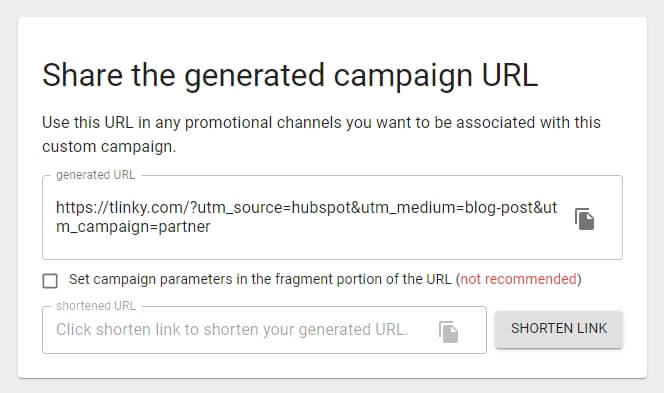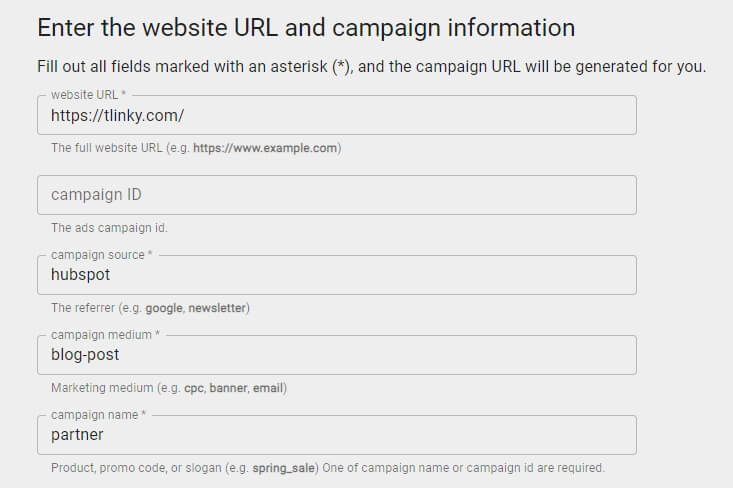In the fast paced world of digital marketing, understanding and effectively utilizing tracking mechanisms can significantly enhance your ability to measure the success of your online campaigns. One such powerful tool at your disposal is UTM parameters.
In the dynamic realm of online marketing, accurate data is the cornerstone of success. Imagine having a comprehensive understanding of where your website traffic originates, which marketing channels are most effective, and which specific campaigns drive the highest conversions. This is where UTM parameters come into play.
In this comprehensive guide, we’ll walk you through everything you need to know about UTM parameters, from their definition to how to use them effectively to supercharge your marketing efforts.
What is the UTM parameter?
UTM parameters, short for “Urchin Tracking Module” parameters, are snippets of code added to the end of a URL that help you track and analyze the effectiveness of various marketing campaigns and traffic sources. Essentially, UTM parameters provide additional information to your website’s analytics tools, allowing you to attribute incoming traffic to specific sources.

Ready to Take Your Marketing to the Next Level?
Supercharge your marketing campaigns and drive more clicks and conversions with TLinky’s URL shortener, QR code generator, Bio page builder and link management tools. Start optimizing today!
Components of UTM Parameters
UTM parameters consist of five key components, each serving a distinct purpose in tracking and categorizing incoming traffic.

Understanding the Five UTM Parameters
utm_source: Tracking the Source
The utm_source parameter indicates the source of your traffic. It answers the question, “Where is the traffic coming from?” This could be a website, a newsletter, a social media platform, or any other channel.
utm_medium: Identifying the Medium
The utm_medium parameter identifies the medium through which the link was shared. Is it an email, a banner ad, a social post, or something else? This helps you understand the medium driving the traffic.
utm_campaign: Differentiating Campaigns
The utm_campaign parameter allows you to differentiate between different marketing campaigns. Whether it’s a summer sale, a holiday promotion, or a webinar launch, this parameter helps you attribute traffic to specific campaigns.
utm_term: Tracking Keywords
The utm_term parameter is used to track keywords associated with the link. This is particularly useful for monitoring the performance of specific keywords in your campaigns.
utm_content: Distinguishing Ad Content
The utm_content parameter helps distinguish different types of content within the same campaign. For instance, if you’re running multiple ads within a single campaign, you can use this parameter to differentiate them.
Elevate marketing campaigns with UTM tracking via TLinky – Your key to data-driven success!
TLinky – Link Management Tool
Why Are UTM Parameters Important?
UTM parameters play a pivotal role in accurately tracking the effectiveness of your marketing efforts. By providing detailed insights into the sources, mediums, campaigns, keywords, and content that drive traffic to your website, UTM parameters empower you to make informed decisions and optimize your strategies.
Creating UTM Parameters
Creating UTM parameters is a straightforward process, thanks to tools like Google’s Campaign URL Builder. This tool allows you to input your link and automatically generates a UTM-tagged URL that includes all the necessary parameters.
Implementing UTM Parameters
Once you’ve created your UTM-tagged URLs, it’s time to implement them. Simply use these URLs in your marketing campaigns, whether in social media posts, emails, or other channels.
UTM Best Practices
To make the most of UTM parameters, it’s essential to follow best practices:
- Keeping UTM Naming Conventions Consistent: Maintain a standardized approach to naming your UTM parameters to ensure consistency and ease of analysis.
- Monitoring and Analyzing UTM Data: Regularly review your UTM data in your analytics platform to gain insights into the performance of your campaigns and sources.
Avoiding Common UTM Mistakes
While UTM parameters are incredibly valuable, they can lead to mistakes if not used correctly:
- Case Sensitivity Pitfalls: UTM parameters are case-sensitive, so “email” and “Email” will be tracked as separate mediums.
- UTM Overload and Mismanagement: Using too many UTM parameters can become overwhelming and lead to misinterpretation of data.
UTM Shorteners and Link Management Tools
Utilizing UTM shorteners and link management tools can simplify the process of creating and managing UTM-tagged URLs, enhancing your workflow and organization.
Measuring Campaign Performance with UTM Parameters
UTM parameters enable you to measure various aspects of your campaigns:
- Tracking Click-Through Rates (CTR): Determine which campaigns and sources are driving the highest CTR.
- Monitoring Conversion Rates: Analyze which campaigns and channels are converting leads into customers effectively.
UTM Parameters Beyond Web Analytics
While UTM parameters are commonly associated with web analytics, they can be used in various other marketing channels:
- UTM Parameters in Social Media Campaigns: Track the performance of your social media posts and ads with UTM parameters.
- UTM Parameters in Email Marketing: Gain insights into the success of your email campaigns by utilizing UTM parameters.
The Future of UTM Parameters
As digital marketing continues to evolve, UTM parameters are expected to remain a fundamental tool for accurate tracking and analysis.
Ready to Take Your Marketing to the Next Level?
Supercharge your marketing campaigns and drive more clicks and conversions with TLinky’s URL shortener, QR code generator, Bio page builder and link management tools. Start optimizing today!
Frequently Asked Questions
What are the mandatory parameters of UTM?
The mandatory UTM parameters are utm_source, utm_medium, and utm_campaign. These parameters are essential for tracking the source, medium, and campaign of your marketing links. While other parameters like utm_term and utm_content are optional, including them provides more detailed insights into your campaigns.
What does UTM stand for?
UTM stands for “Urchin Tracking Module,” a set of parameters added to URLs for tracking marketing efforts.
Can I add UTM parameters to any link?
Yes, you can add UTM parameters to any link you use in your marketing campaigns.
Do UTM parameters affect SEO?
No, UTM parameters do not directly impact SEO. Search engines generally ignore UTM parameters when indexing content.
Are UTM parameters case-sensitive?
Yes, UTM parameters are case-sensitive, so you must use consistent capitalization.
Can I change UTM parameters after a campaign has started?
It’s not recommended to change UTM parameters once a campaign has started, as it may disrupt your tracking and analysis.
Conclusion
In the ever-evolving landscape of digital marketing, UTM parameters stand as a beacon of insight, offering marketers the ability to dissect and understand the intricate journey of online traffic. By harnessing the power of UTM parameters, you’re not only unraveling the enigma of your audience’s behavior but also equipping yourself with the knowledge to optimize and elevate your marketing strategies.
